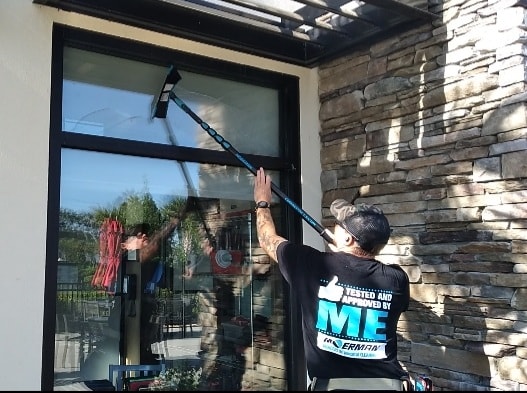Over the last handful of years, there’s been a pretty sweeping trend with more and more businesses adopting a pay-per-performance pay structure vs. your standard hourly pay. I’ve seen this method called numerous different things, “pay per performance,” “commission-based pay,” “hourly plus a bonus.” Still, it all adds up to rewarding strong-performing employees as quickly as possible at the end of the day. As a bookkeeping nerd that sees a whole swath of financial performances across the home service industry, I can advise that this trend is gaining traction for a reason. The financial performance doesn’t lie. You need to be aware of some pitfalls if you will adopt this pay structure in 2022. Let’s dive in and make sure that if you are hopping on this bandwagon or leaning towards it, you do so as efficiently as possible.
The Case for Commission Style Pay:
1.Reward your strongest employees
We talk about how important it is to have A players on our team. We want more of them, and we want the B players to step up to be them. A sure way to get the most out of your team is to reward them for the results that drive your business, and the fastest way to do that is with a commission structure that pays out weekly. As a business owner that pays hourly, you constantly fight the battle of employees’ finger-pointing and noting how unfair it is that they make the same amount of money as “that guy” that they run circles around out in the field. That vibe causes your A players to slow down and perform at B player speed and on down the ladder because what is the point of outworking them if you’re both going to make the same amount of money. That problem gets reduced significantly under commission style pay, especially if you are running one-person crews (maybe next month, I’ll hit on the pros/cons of that topic!). Paying hourly rewards employees for being punched in longer, while commissioning rewards employees for punching out more work. Our businesses succeed based on the latter (sometimes the ladder – that’s a window cleaning joke).
2. Align your interest with that of your employees
It sucks when you have to cut a big paycheck to an employee getting paid hourly, but they didn’t bring in much revenue. You have big money going out the door and not enough coming in to cover it. The flip side sucks for employees when they are out in the field crushing it and seeing huge checks coming your way, but regardless of how much they pile up for you, their pay stays the same, and the only way they can make more is to slow down and rack up more hours. When their paycheck is big, you get nervous. When their paycheck is small relative to the work they knocked out, they get bitter. When one of you is winning, the other is oftentimes losing, and that’s not great for your company culture. On the flip side, you are always winning and losing together when you do commission-based pay. When they are piling work up, they get more and more pay. When they get work done faster, they don’t lose money. When you cut them a huge paycheck, you want to high-five them and buy them a beer because they also just made you a huge paycheck. That’s a much healthier culture to be a part of.
3. Improve your production rates

Credit: Kyle Primrose
It’s no surprise that when employees get paid for completing work, not just for being out working, they have a very strong tendency to get that work done much faster. That, in turn, means they can take on more work that day to make you both even more money, or at least they can wrap up their day earlier and get home to their families. Both of those options are good for the employee and the business. We’ve helped a handful of companies switch to commission-based pay, and generally, production rates go up around 30-50%. If you combine that with solo crews instead of teams, production rates can damn near double.
4. Protect your P&L
Your customers don’t pay you hourly. You generally charge them based on the number of window panes or some other fixed metric that locks in a price for them. So, in turn, it puts a ton of risk on you if you know you need to pay your employee an open-ended amount based on how long it takes them. On the other hand, they always get a constant percentage of that revenue if you pay commission. You have now locked in the price you are charging the customer and the amount you are paying the labor. So, you have reduced a whole heck of a lot of the risk in the financials of your business.
In the window cleaning space, we can generally pay around 25% of the revenue out to wages (if you run solo, then the guy gets it all, if you run teams, then you’ll want to do 13 or 14% to the leads and 12 or 11% to the helper). That % is based on the revenue per truck. The more guys on that truck, the more it needs to get split up, and you’ll find the guys don’t like splitting that money up once they’ve seen how big their checks are when they go solo!
But, back to my point here, when you know exactly how much labor will cost you at every single job it takes away the single biggest variable in your business. If you don’t have to worry about how much each job is costing you to produce now, you can spend your time focusing on your marketing acquisition cost. Or your employee recruiting and training program, or looking for your next office space to handle all of this growth you are about to experience. When you lock in that labor rate, it opens up the door for you to focus on the things that truly grow your business, and that allows you to make WAY MORE MONEY.
5. No overtime pay
According to the US Dept of Labor, we are considered “retail establishments” for purposes of assessing commission-based pay. Under section 7(i) from Overtime Under the FLSA, as long as 1) we employ the person, 2) they have a regular rate of pay in excess of one and half times the applicable minimum wage worked (they will if your prices are high enough), and 3) more than half of their earnings in a period consist of commissions (you will still need an hourly minimum but they should hit commission more than half of the time), then we are exempt from paying Overtime.
Of course, not all employees will always be exempt. For instance, a trainee might work over 40 hours, and their paycheck will likely be hourly, so they would be owed Overtime in that case. However, for most of your employees, these conditions will almost always be met.
The Things to Lookout For:
1. Rushing and cutting corners
When employees are incentivized to get their work done faster, they’ll likely overdo it and push too fast every once in a while. It would help if you were diligent about preaching safety and quality practices. In general, any good employee values their safety and has the innate human condition of taking pride in their work. It’s fair to assume if they didn’t, they wouldn’t be working for you anyway, but in a commission-based pay environment, it is worth monitoring these more closely. Specifically, on the quality end of things, an employee has to go back to a job to do some rework, and there is no revenue tied to it, which usually sets them straight on the quality threshold.
2. Unwilling to help and to race the clock

Credit: Daniel Howerton
Since drive time doesn’t earn them any revenue, they might be in a hurry to get from job to job and may not be interested in driving across town to help a teammate finish their day. They may also try to get their day done super early by rushing through it, and even if their quality is good in doing so, they aren’t around the help the rest of the crew finish up. You have to be very clear that they are expected to be available between the hours that you need them and can’t just call it a day at noon because they got their jobs done. Send them out to get more work done if that’s the case.
3. Entitlement to a big check
Once they taste a big check, they could get entitled and complain about not having the biggest and best route for that day. That’s generally pretty easy to manage but can be a little bit annoying if they don’t see the big picture.
4. More administrative work to calculate it
This is maybe the biggest pain in the butt when it comes to commission-based pay. You still need to calculate hours and ensure they are making minimum wage, and you need to know according to the DOL 7(i) rule when someone is owed commission and when they are not. Some CRMs can help figure out the commission percentages, but we often export everything to a spreadsheet from there to handle the helping situations where one guy went to help another halfway through a job and that sort of thing. There’s a lot more math involved than simply paying hourly.
5. You’ll lose a couple of employees
Don’t worry. They aren’t you are A players. They are the C and D players that you should have fired a long time ago, but you needed them because at least they would get a little bit of work done. You don’t need them because your A and B players will pick up their slack. The truth is they probably already were. You weren’t rewarding them for it.
If you’re on the fence about commission-based pay, it’s a firm recommendation from yours truly. However, take the drawbacks seriously, and create a game plan for situations that might throw things askew.
Check Out Our Website
As always, don’t forget to head to our website and grab our free chart of accounts download and free target budget template so you can keep your financials dialed in and your profit margin maxed out.
Dan Platta – CEO – Blue Skies Services
Bookkeeping, Beer, and BS on Facebook


A well thought out article that shows both sides of the coin. Now I’m curious about that third option mentioned of hourly plus bonus. I wonder if that option may be the happy middle.